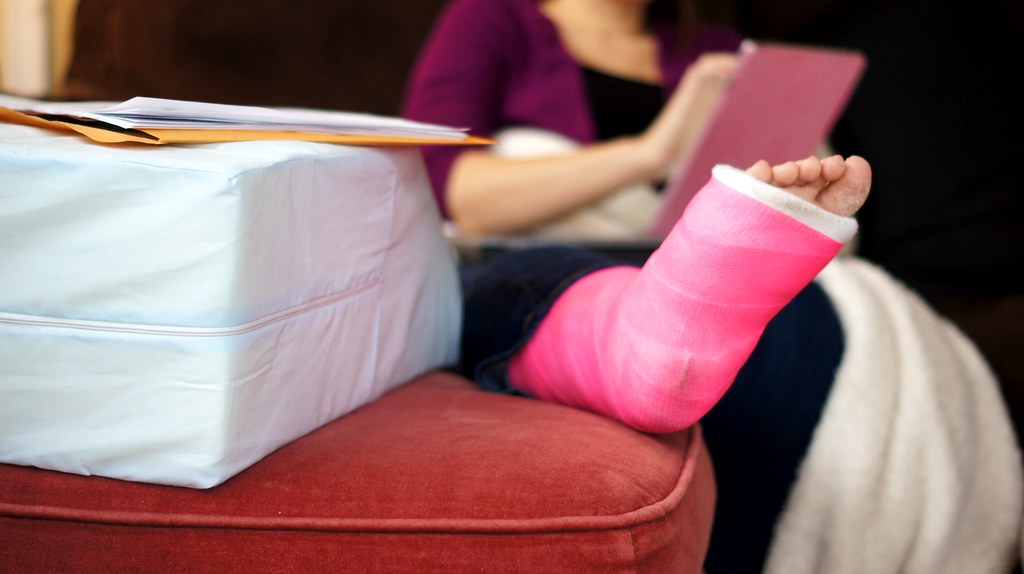I took the above photograph on my check-in with Christine. Compare it to the one I took shortly after her injury. Go look back at it and notice the (huge) difference. This Christine has an iPad in hand. She has her (printed) medical records on top of a foam wedge that she learned about almost by accident. She has her X-ray images on a CD that she can load on her laptop. She’s nicely casted. And she has stories, lots of stories, and passion for the design of health care.
Christine has kept blogging (hooray!) and tells a great story about how she’s been told to ELEVATE, ELEVATE, ELEVATE her foot. And yet, her physician’s waiting room has no foot stools. For anyone. And she is taken back to the exam room. Down a looooooong corridor, passing 7 empty rooms, with each room passing increasing the swelling in her lower extremity.
Christine is amazed at the way health care is designed and we talk about it for our entire visit. She wants to help. And she could – she has one of those jobs in Washington that I’m not supposed to ask what she does for a living. At the same time, I hear a resignation in her voice that I heard from a patient representative Diane McNally last fall – Diane told me,
“There were many times in my care where I was willing to provide input/feedback, but simply no place or opportunity to provide it.”
I’m willing to hear about it.
Christine and I reviewed her printed out medical record together. It shows the good and the bad of an electronic health record:
The good: Every entry is time stamped with the initials of the person who wrote the entry.
The bad: A template has clearly been used. In one paragraph it says, “Patient is in no acute distress.” A few sentences later it says, “Patient is in distress”. Christine’s leg was crushed. She was in distress. Under the physical exam it says she could wiggle her toes. Christine demonstrates to me her current ability to toe wiggle. I don’t perceive any movement with my naked eye – maybe with a microscope?
I asked her to do me a favor and find out how much the hospital charged for the paper medical record – is it still $0.73 a page in Virginia? 🙂
Back to letting patients help. Christine is a different woman when I see her this time. She has figured out so much about how to manage her condition, is appreciative of her good health, looking forward to healing, and has a desire to pay it forward for other patients. Is the health care system going to let her?
As I said above, I’m be willing to explore it with her, because one thing isn’t different about Christine, she’s still awesome.

2 Comments
Sometimes its the little things that signal the obvious — having footstools to allow your patients to elevate their feet, per your recommendation…
I went to an allergists office once in NC that installed the HEPA system hospitals have to remove allergens from the air, didn’t have carpeting, didn’t have jars on tabletops (dust), etc. — WHAT a difference it made for my appointments.
Like the ever present sugar-free candies at the dentists office (why still a candy?!), we need to tune in and practice what we preach.
via @tedeytan The involuntary patient pt 1 http://t.co/GUp1h702 pt 2 http://t.co/BdARbcPz pt 3 http://t.co/b4JHpxG4 #hcsm #change